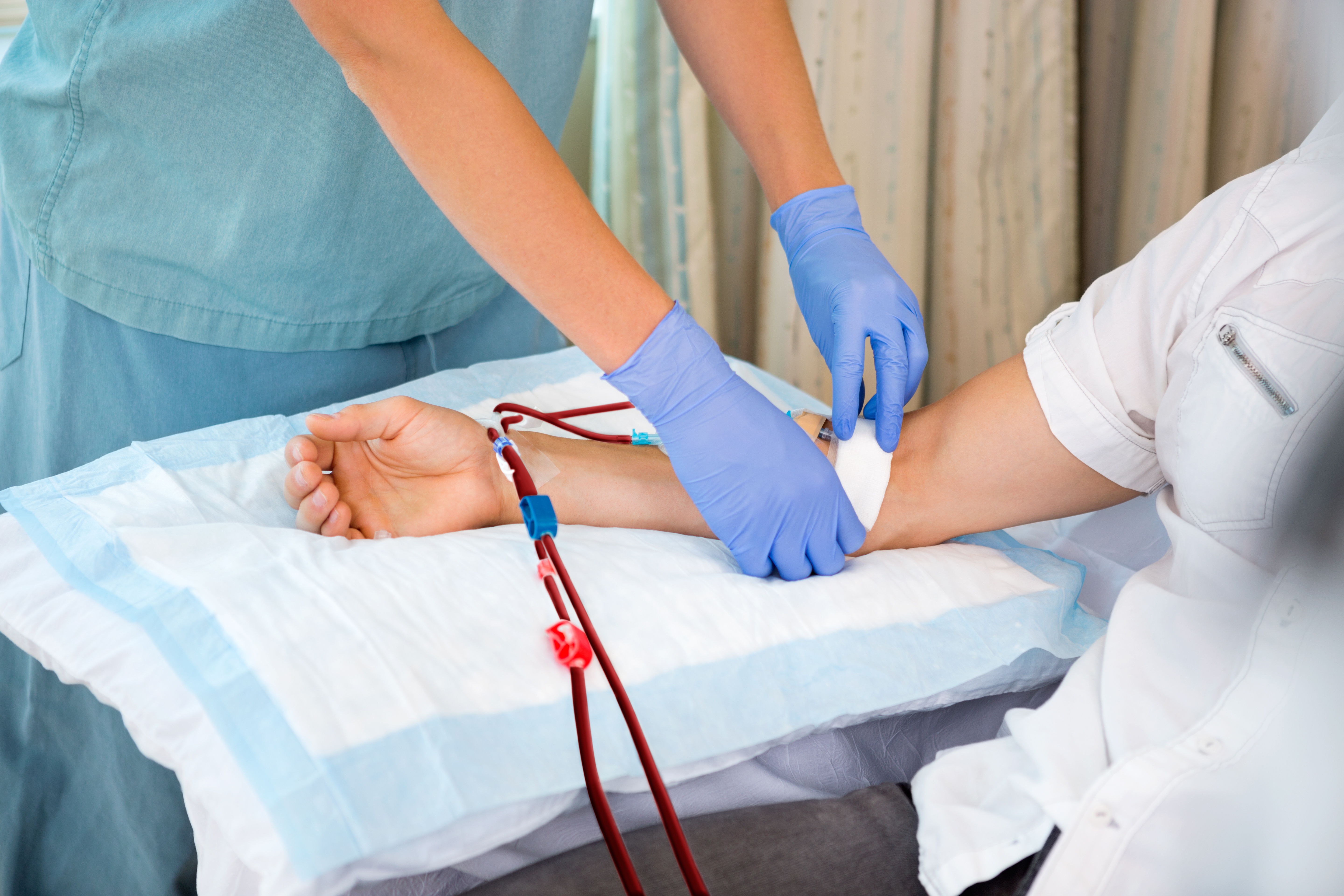by Mandip Panesar MS, MD, FASN and Patricia Denny MS
Most of us know someone who is a dialysis patient. Kidney failure, resulting in the need for dialysis, strikes as many as one in nine Americans. When kidney function decreases to approximately 10% of its normal function, dialysis is essential to sustain life.
Erie County Medical Center (ECMC) is the largest provider of dialysis, and a safety net for dialysis needs in all eight WNY counties. As a result, ECMC always remains open even when there is a weather emergency. The registered and licensed practical dialysis nurses all have specialized training in their specific area of dialysis, and other dedicated professionals on staff include social workers, dietitians, biomedical technicians, secretaries, clerks, and inventory specialists.
ECMC dialysis patients are continually supported by renal nurse practitioners, physician assistants, and nephrologists. The ECMC dialysis unit also serves as a liaison for patients needing their dialysis access evaluated in the state-of-the-art Vascular Access Center located on the 10th floor of ECMC’s main building, adjacent to The Renal Center of Excellence for Transplantation — the sole provider of kidney transplantation services in all of WNY.
So just what is dialysis? There are three kinds of dialysis treatment, with the most common being hemodialysis performed in a dialysis unit. The patient is connected to the hemodialysis machine by a surgically-created access called an arterial-venous fistula. The blood is cleaned of many toxins, including one called urea, and excessive electrolytes such as sodium and potassium are removed from the patient’s blood. Hemodialysis is a safe effective means of sustaining human life. It’s also possible to receive hemodialysis at home, with the presence of a dialysis partner.
Peritoneal dialysis (PD) involves the use of a fine, small catheter that is surgically placed into the patient’s abdomen, very close to the peritoneal membrane. The peritoneal membrane is a thin, flexible membrane lining the abdominal cavity of the human body. Dialysis fluids are infused through the PD catheter into the abdomen next to the peritoneal membrane. When the fluid is later removed, toxins, electrolytes, and fluid mixed into the dialysis solution are also removed, thereby cleansing the blood.
The dialysis center is located on the ground floor of ECMC’s ambulatory care center, and is open Monday through Saturday, from 6 a.m. to 10 p.m. To reach us call (716) 898-1400. We encourage you to contact the ECMC Regional Center of Excellence for Transplantation and Kidney Care for your dialysis, vascular access, and transplantation needs.
About the Authors:
Mandip Panesar MS, MD, FASN is Chief Medical Information Officer, Medical Director of the Hemodialysis Unit at the Regional Center of Excellence for Transplantation and Kidney Care, and a Clinical Associate Professor of Medicine at UB. He is board certified in Nephrology and a Fellow of the American Society of Nephrology. Patricia Denny MS is Director of Dialysis Operations at the Center.













